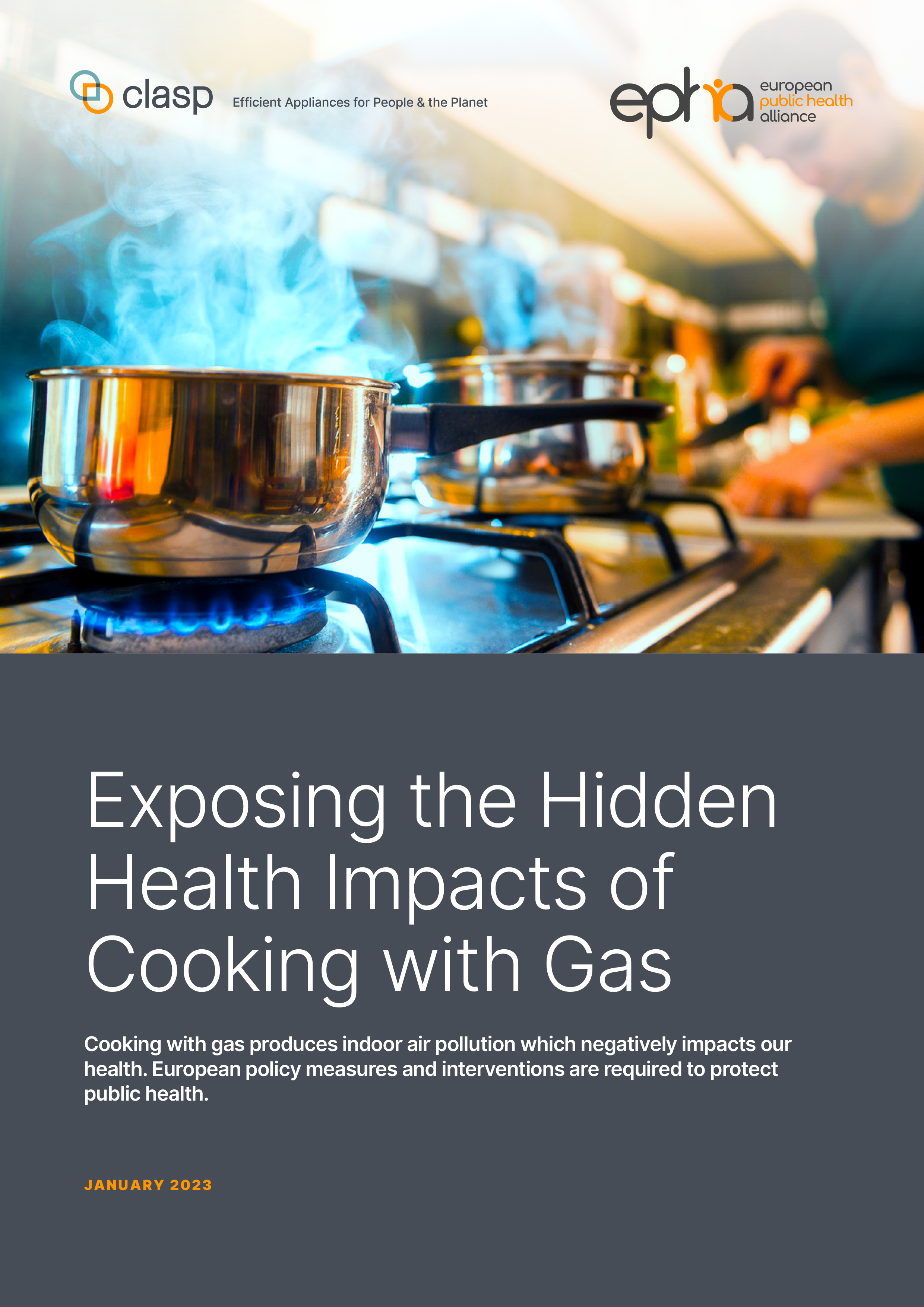The “Exposing the Hidden Health Impacts of Cooking with Gas” report by the non-profit energy efficiency group CLASP and the European Public Health Alliance (EPHA), with technical input by the Organisation for Applied Scientific Research (TNO), reveals that yearly over 700,000 children in the EU experience asthma symptoms due to cooking with gas. This makes the impact of gas cooking on the burden of childhood asthma comparable to that of second-hand smoke.
The report examines the health risks associated with gas cooking and provides actionable solutions to phase out gas cooking appliances across the EU-27 in favour of electric alternatives. Gas cooking appliances emit invisible air pollutants that pose significant risks to human health and the environment. Despite the European Environment Agency recognising air pollution as the biggest environmental health risk in Europe, there is a fundamental lack of public awareness and regulation on the relationship between gas cooking and indoor air pollution.
Over 100 million EU citizens cook on gas, including more than half of all homes in Hungary, Italy, the Netherlands, Romania and Slovakia. On average, these households exceed the World Health Organisation’s 2021 Air Quality Guidelines and the EU’s Ambient Air Quality Directive standards — multiple times per week, every week. Exposure to pollution is known to cause strokes, heart disease, lung cancer, and both chronic and acute respiratory diseases, including asthma. The report highlights nitrogen dioxide (NO2) as a significant health-damaging air pollutant released by the gas flame. It estimates that over 700,000 children in the EU, accounting for 12% of current asthma cases among children, experience asthma symptoms due to cooking with gas. The findings go on to explore the benefits of investing in clean electric cooking and optimal ventilation strategies to remove the burden of health and energy costs.
Currently, there are no EU-wide or Member State policies addressing the health and environmental risks associated with gas cooking, yet there is a growing body of evidence highlighting the associated harm. Unlike cigarettes and cars, gas cooking appliances lack warning labels that inform consumers about the pollutant emissions. The report aims to bridge this gap by recommending several actions to be taken at the EU Commission, Member State, health professional and at the individual level.
The EU Commission and Member States have the opportunity to protect public and planetary health and should prioritise strict regulation and incentivise efforts to accelerate the transition to electric cooking. Additionally, collaborative work with health professionals is key to improve public awareness on the harm gas cooking can cause and how to mitigate it. This holds particular relevance with the European Commission’s current revision of Eco-design and Energy Labelling requirements on domestic cooking appliances.
The report “The Public Health & Environmental Impacts of Cooking with Gas” exposes the same health dangers and follows a similar structure but provides data and recommendations specific to the UK context.
Ultimately, both reports emphasise the importance of setting a clear path to phase out gas cooking, to uphold the EU Efficiency and Electrification Agendas and climate goals.
Key references to the report:
- Gas cookers as toxic as ‘second hand smoke’, study reveals (Euronews)
- Asthma study sparks debate about safety of cooking with gas (Economic Times)
- Les cuisinières à gaz pourraient causer de l’asthme d’après deux études récentes (Le Figaro)
- 70.000 kinderen hebben mogelijk astmasymptomen door koken op gas (Leidsch Dagblad)
- Cucinare a gas può essere dannoso quanto il fumo passivo: come difendersi (La Repubblica)
- Estudios vinculan el uso de cocinas de gas con el asma infantil (La Nacion)


